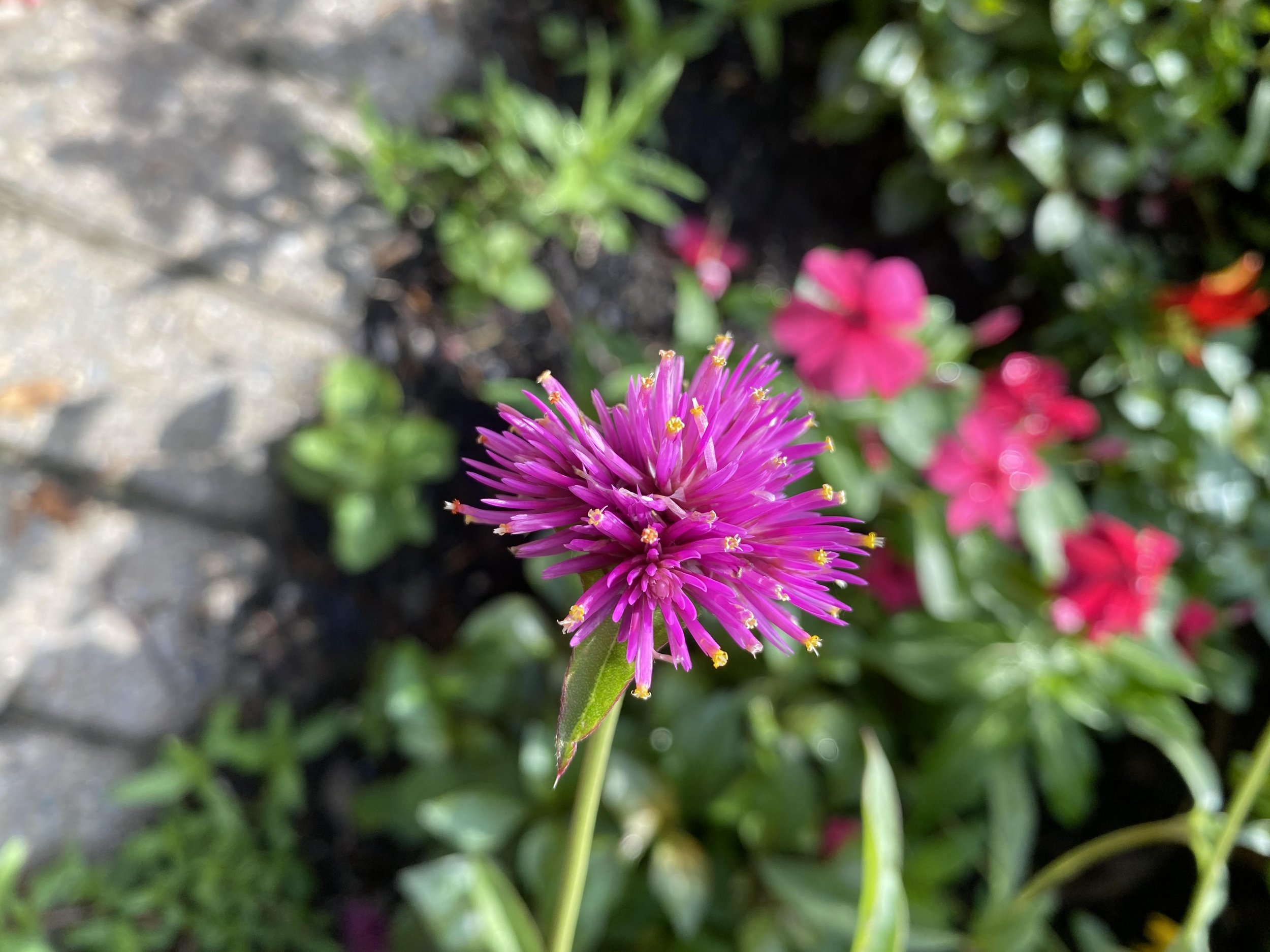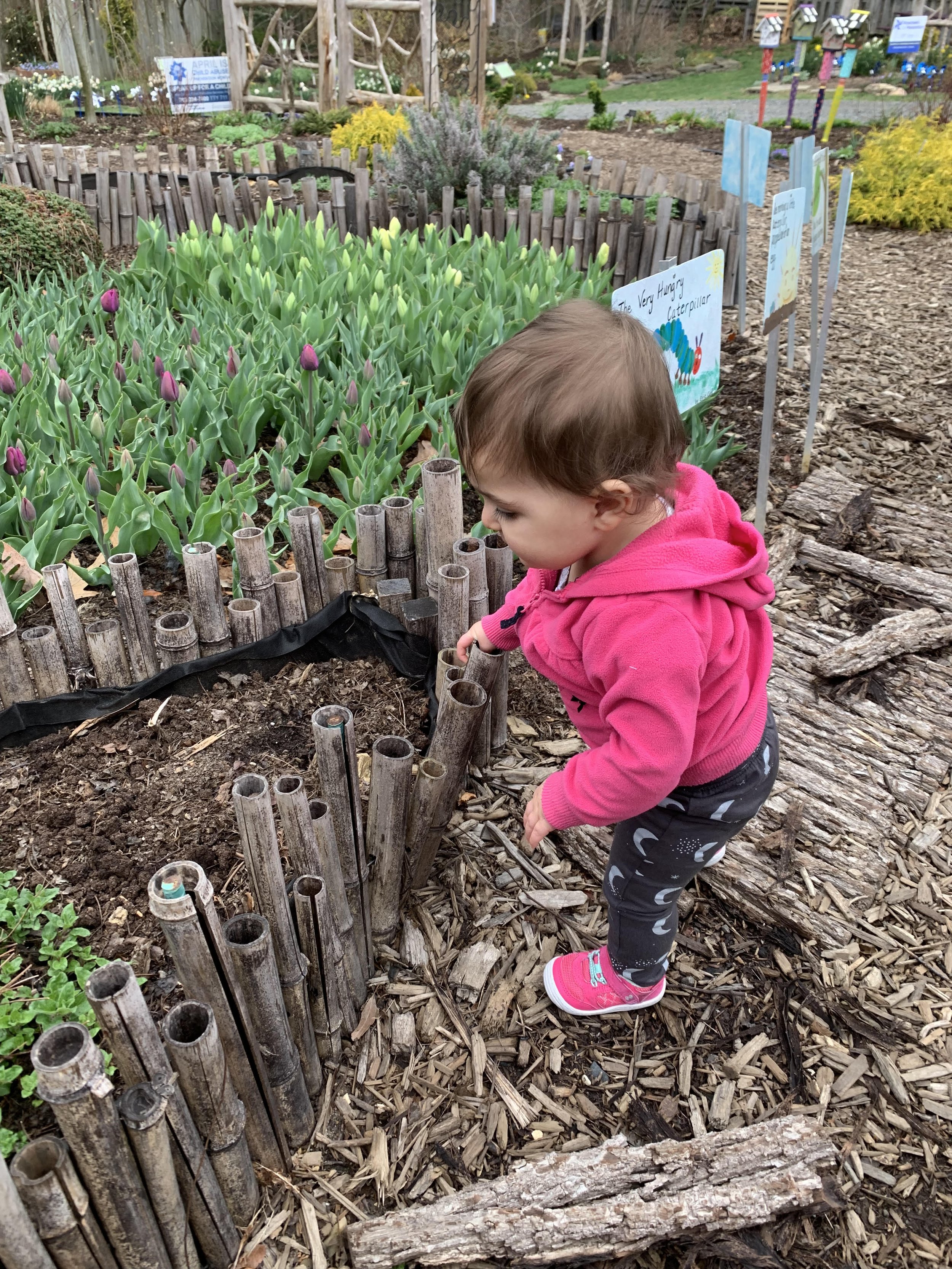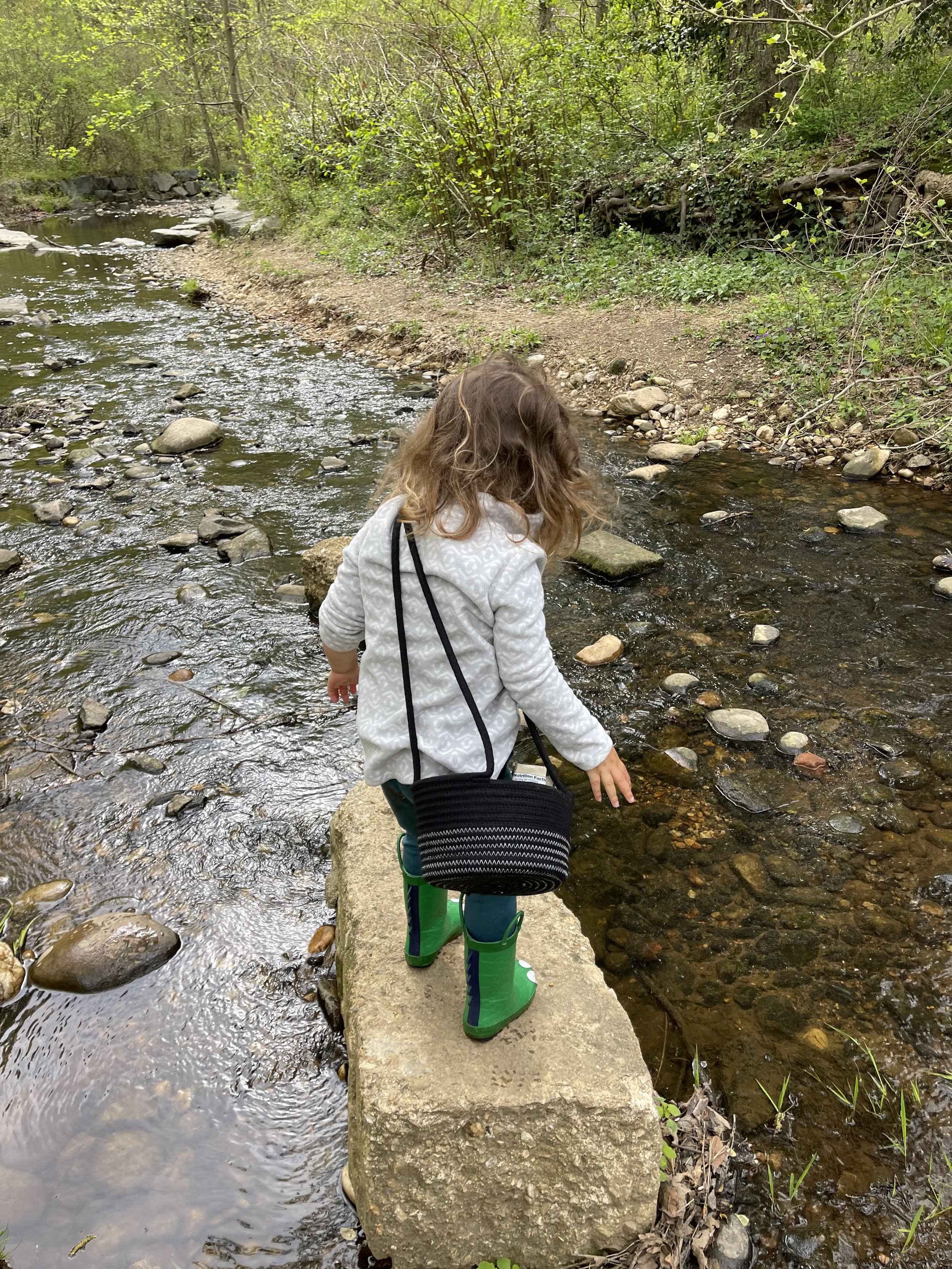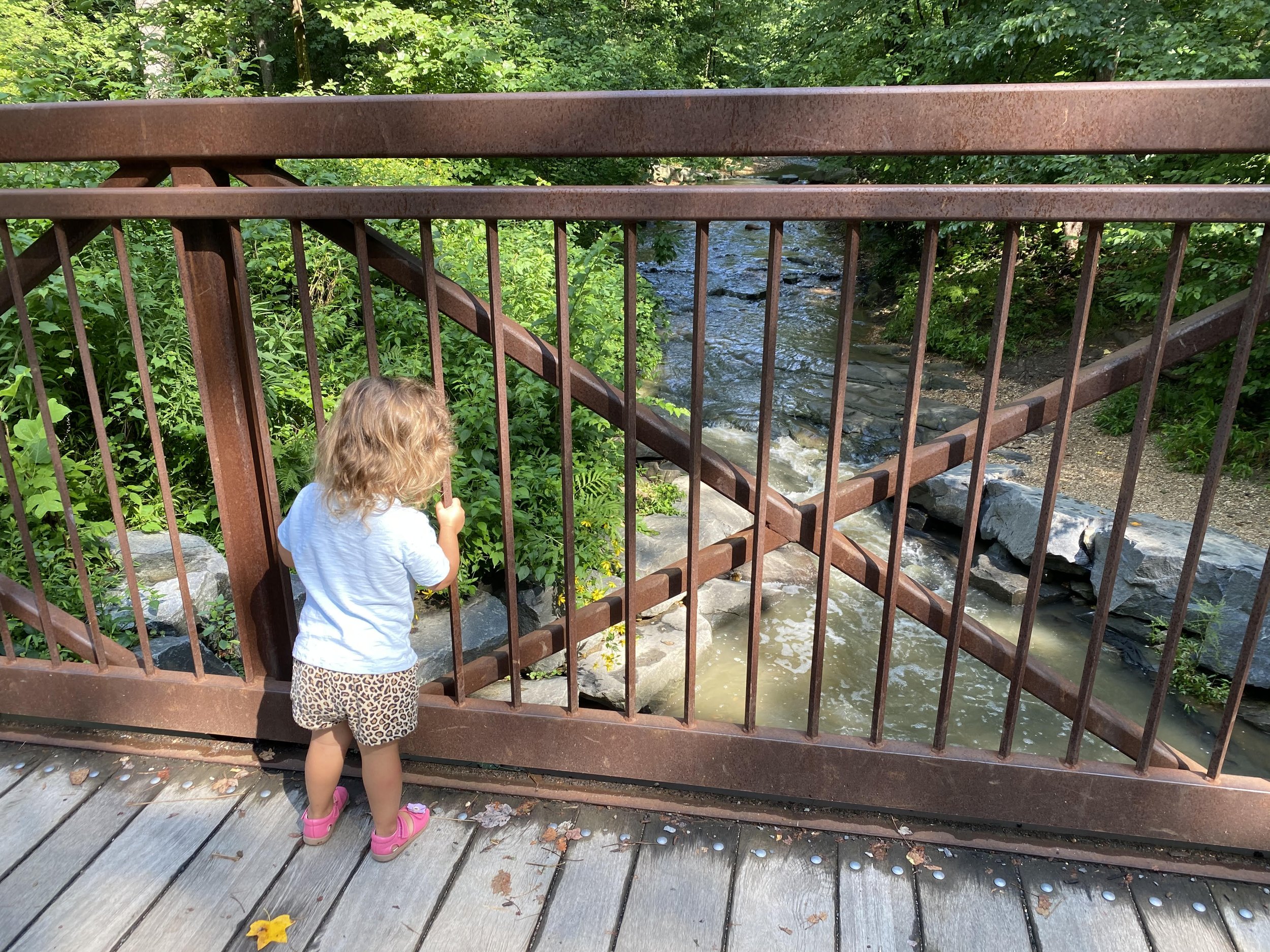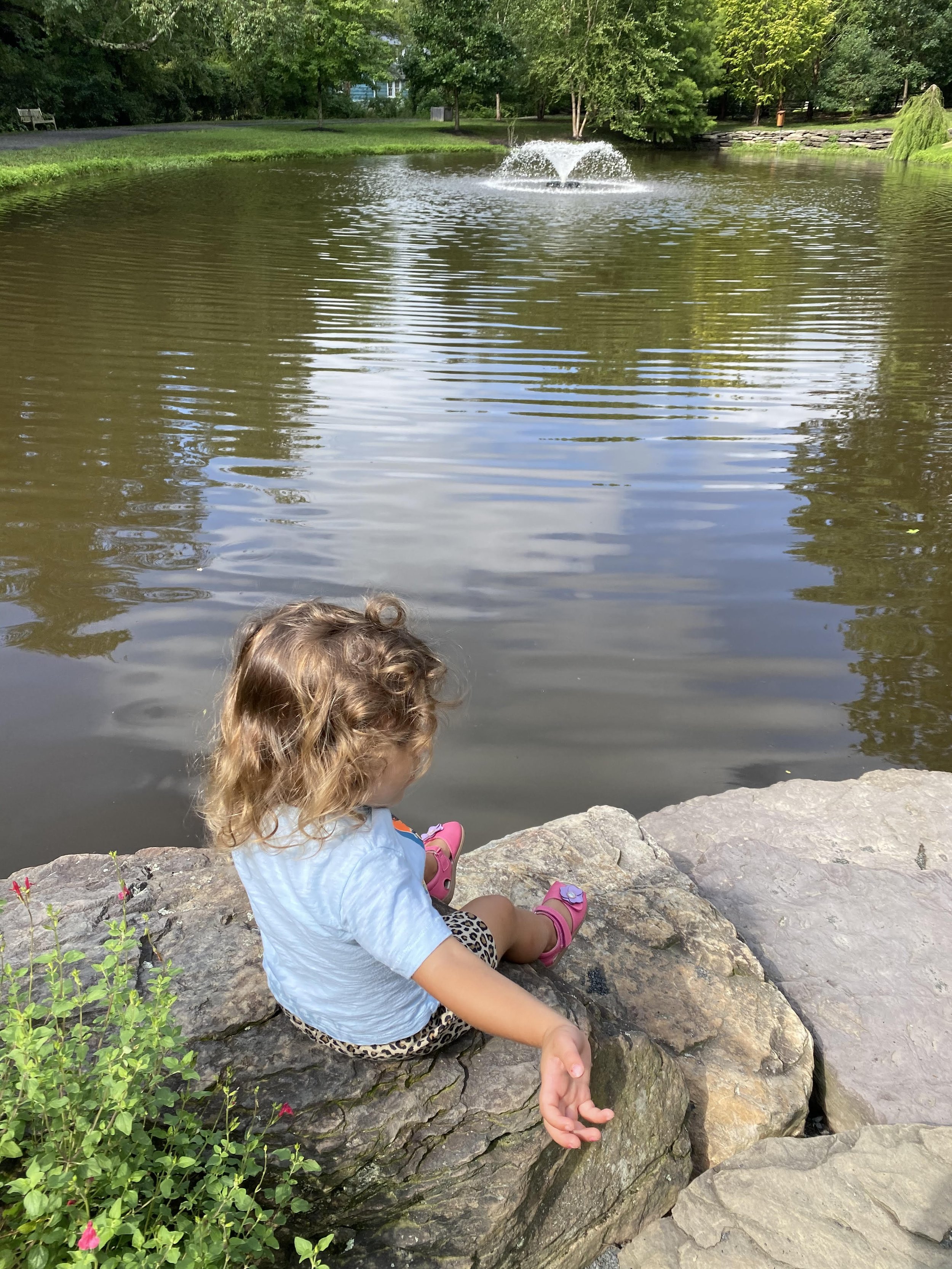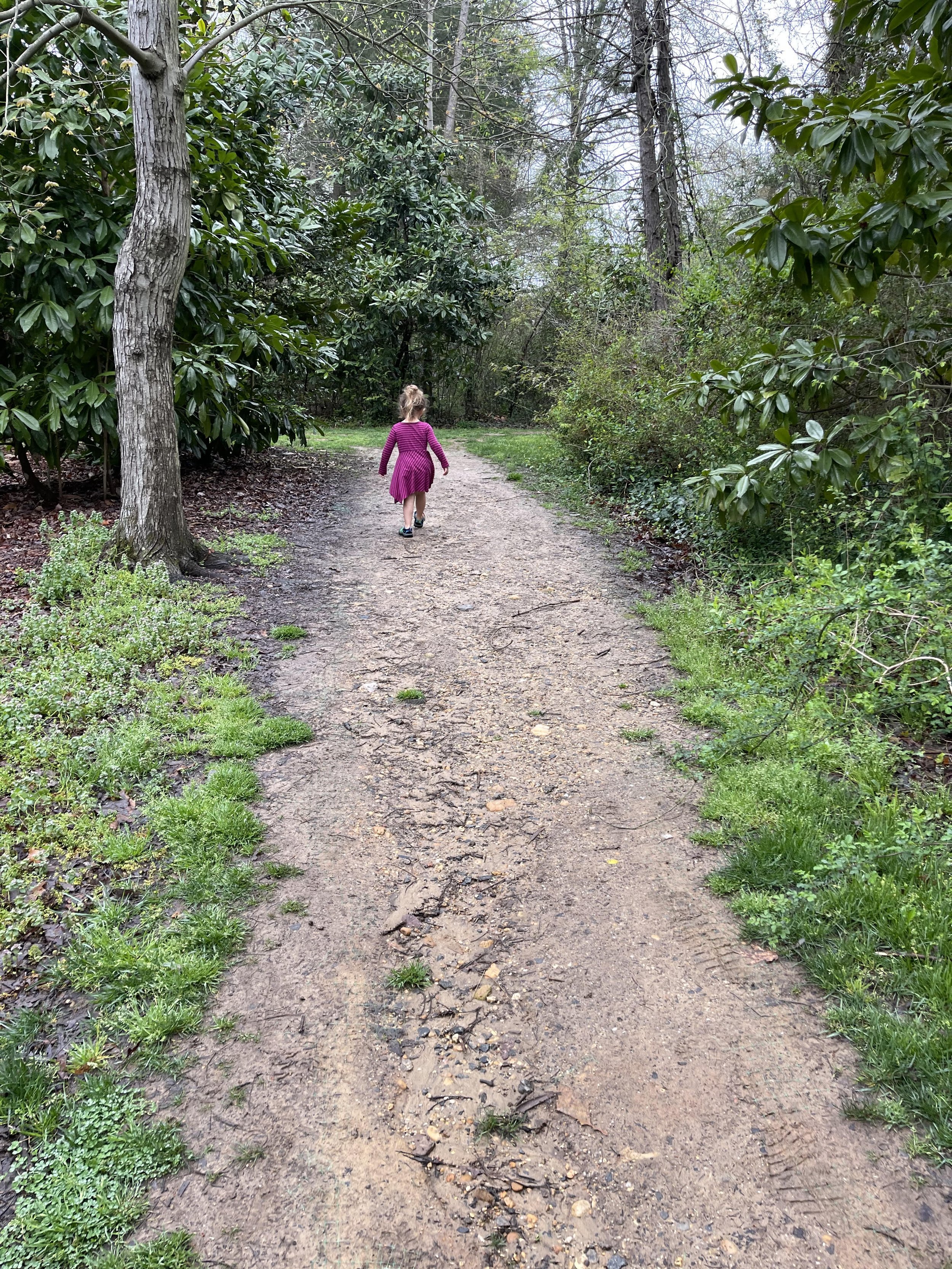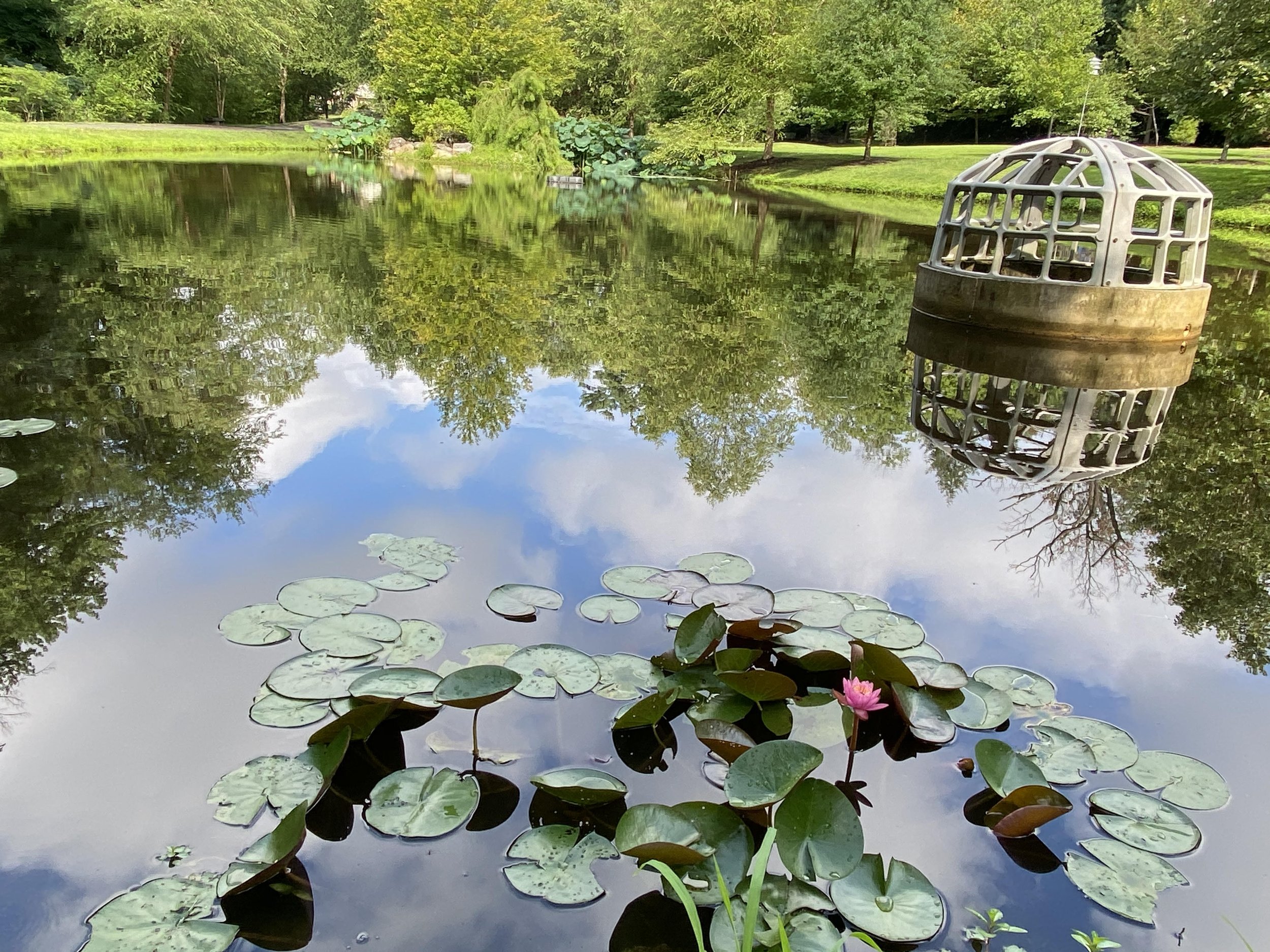Green Spring Gardens
Green Spring Gardens is a public park in Fairfax County with diverse areas, beautiful edible and native plant gardens, and tons of trails to explore.
The Flower Gardens
When you walk into Green Spring Gardens, you are immediately inundated with visually pleasing flowers and plants of all kinds. Each one is labeled, so don’t hesitate to take note and teach your children the names of the plants and flowers they are seeing. If you see one of the many volunteers or expert gardeners during your visit, don’t hesitate to ask them questions! They are an amazing resource.
-
Walking through the flower gardens and around the main circular path provides an opportunity to take note of colors! What colors do you see? Are they vibrant? Are they muted? Also take note of shapes! Do you see any flowers that resemble stars? Or circles?
-
Name a color and then see if your child can go and find a flower or plant of that color! It’s a great way to explore and work on color recognition.
Name a letter of the alphabet and see if your child can find a flower that starts with that letter (especially since each flower is labeled). Great activity for young readers!
-
Talk with your child about the importance of looking with your eyes and only gentle touching with your hands when it comes to the flowers and plants.
The Children’s Garden
An Amazing Space Just for Kids!
-
In the center of the children’s garden on the right of the path, adjacent to the main visitors center, are adorable visuals from “The Very Hungry Caterpillar” by Eric Carle. If your child is familiar with the book, talk about what part of the story each visual depicts! See if your child can retell parts of the story - what foods did he eat? When did he become a butterfly?
Activity Tip: Talk about the life-cycle of a butterfly!
Egg → Caterpillar (Larva) → Chrysalis (Pupa) → Adult Butterfly!
-
Towards the back of the children’s garden (to the right of the path) is a weather chart! Use it to talk about the weather - is it sunny? Cloudy? Cold? Hot? Rainy? Dry? Take it a step further and talk about what season it currently is and how the season affects what can grow!
Activity Tip: Go home and make your own weather chart! All you need is some construction paper, crayons/markers, scissors and glue! Make visuals for each type of weather!
-
Using the mallet provided (or even a stick), have your child engage with the chimes (in the children’s garden to the right). What happens as you move across the pipes? Does the sound go higher or lower? Do the longer pipes sound different from the shorter pipes? We often engage children in observational learning involving their eyes/sight but this provides an opportunity for auditory observation/exploration!
-
in the children’s garden to the left of the path, up against the fence, are amazing visuals to explain what goes in compost!
Activity tip: Talk about things in your house that could be composted! What could you compost? What would go in the recycling?
Caregiver Tip: Next to the compost visuals are picnic benches which provide a great place to sit down for a snack or some lunch.
The Stream
As you walk down from the gardens towards the ponds, stop on the bridge that goes over the stream. Make some observations! What direction is the water flowing? Is it moving fast or slow? What do you see in the water? If possible, go on a small stream walk!
-
Rainboots are great for stream walking during most seasons. Waterproof/water-resistant sandals such as Keens are great for stream walking in the summer. Just make sure that your child’s footwear has good grips on their soles!
-
Look around! Look for rough rocks! Smooth rocks! Long sticks! Short sticks! Deep water! Shallow water! It’s a great opportunity to practice finding and using a variety of descriptive words and even a chance to make observational comparisons.
-
watching your child walk on potentially slippery surfaces can be nerve-wracking but try not to intervene unless they are in danger. Stream walking is a great opportunity to work on balance and core-engagement on uneven or unstable surfaces.
The Ponds and More…
-
So much animal life to observe in the ponds - geese, ducks, turtles!
-
the gazebo in between the two ponds provides another great spot to sit and take a break. It also provides time to make some observations or take a pause to listen for bird calls or animal sounds.
-
Back up at the visitors center is the greenhouse. If it’s open for visitors, check it out.

